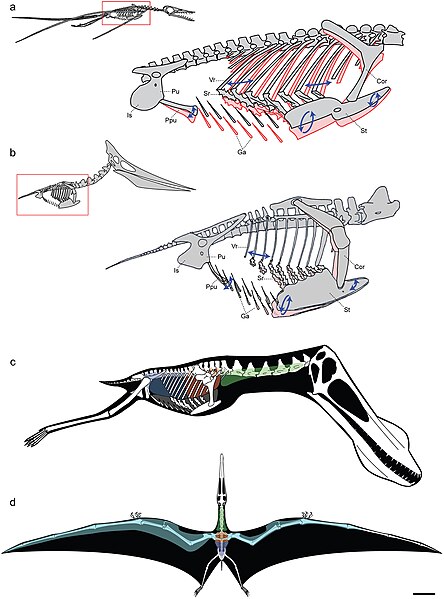Archivo:Pterosaur respiratory system.jpg

Tamaño de esta previsualización: 444 × 599 píxeles. Otras resoluciones: 178 × 240 píxeles · 356 × 480 píxeles · 569 × 768 píxeles · 759 × 1024 píxeles · 1517 × 2048 píxeles · 3006 × 4057 píxeles.
Ver la imagen en su resolución original (3006 × 4057 píxeles; tamaño de archivo: 2,52 MB; tipo MIME: image/jpeg)
Historial del archivo
Haz clic sobre una fecha y hora para ver el archivo tal como apareció en ese momento.
| Fecha y hora | Miniatura | Dimensiones | Usuario | Comentario | |
|---|---|---|---|---|---|
| actual | 21:17 2 mar 2009 |  | 3006 × 4057 (2,52 MB) | FunkMonk | {{Information |Description=Models of ventilatory kinematics and the pulmonary air sac system of pterosaurs. a, Model of ventilatory kinematics in Rhamphorhynchus. Thoracic movement induced by the ventral intercostal musculature results in forward and out |
Usos del archivo
La siguiente página usa este archivo:
Uso global del archivo
Las wikis siguientes utilizan este archivo:
- Uso en ar.wikipedia.org
- Uso en en.wikipedia.org
- Uso en it.wikipedia.org
- Uso en ko.wikipedia.org
- Uso en nl.wikipedia.org
- Uso en oc.wikipedia.org
- Uso en outreach.wikimedia.org
- Uso en pt.wikipedia.org
- Uso en ru.wikipedia.org
- Uso en tr.wikipedia.org
- Uso en vi.wikipedia.org
- Uso en zh.wikipedia.org

